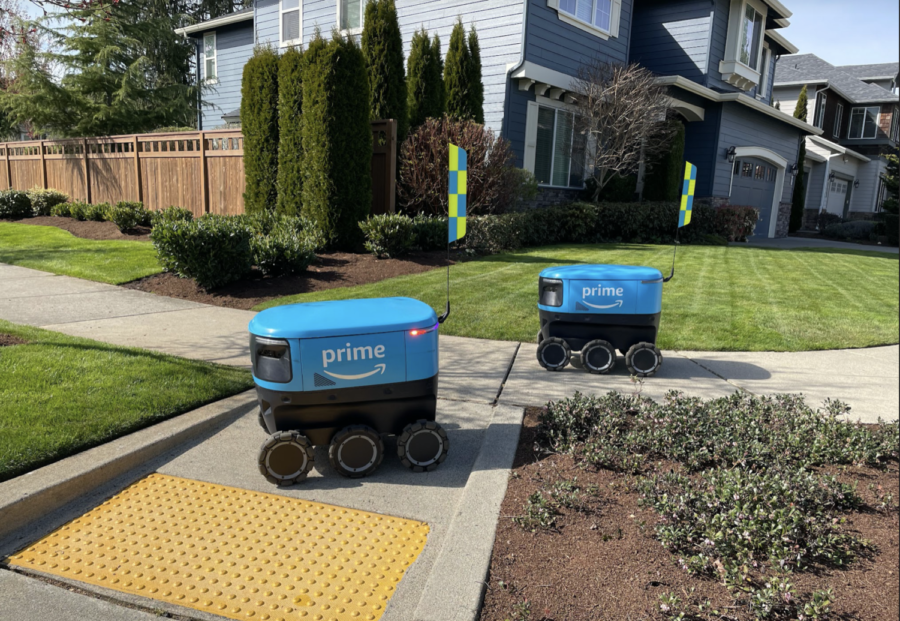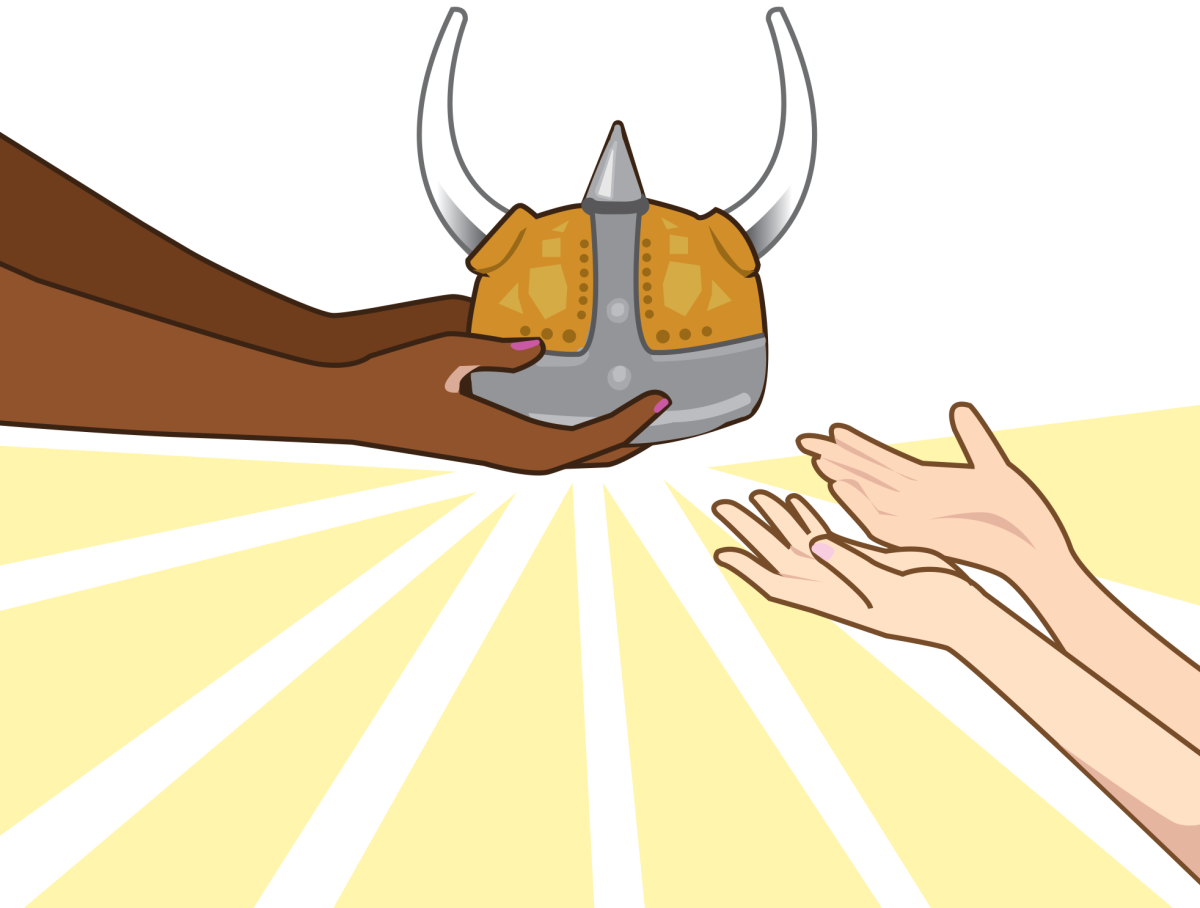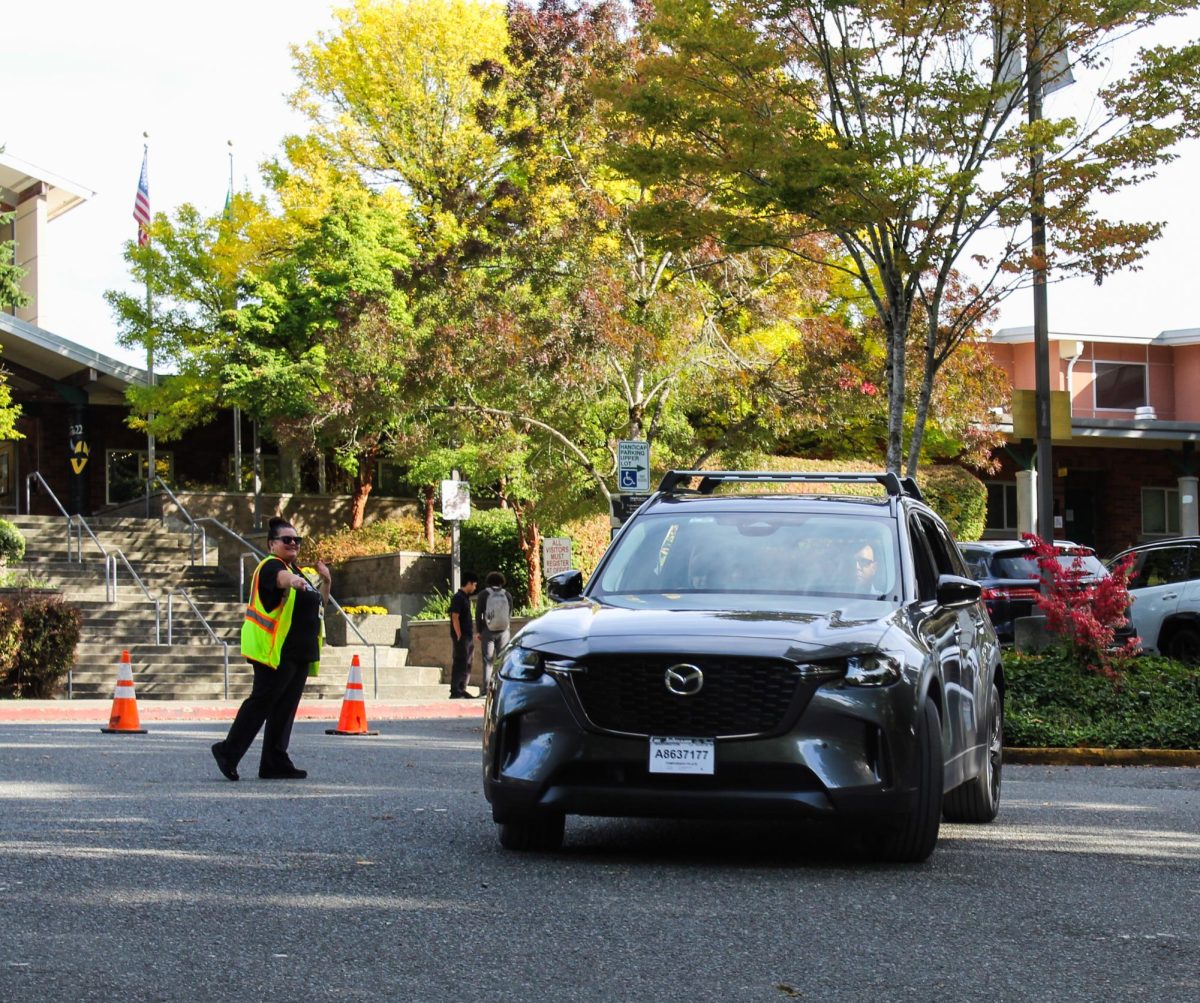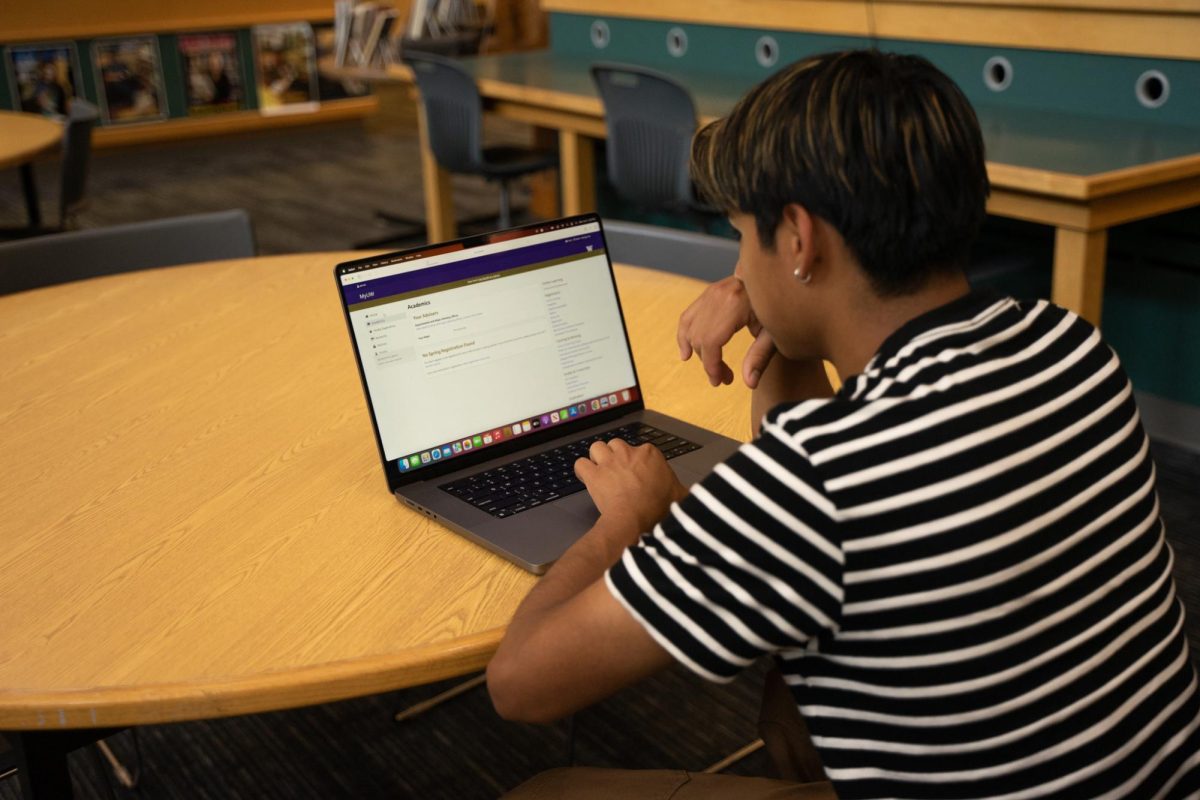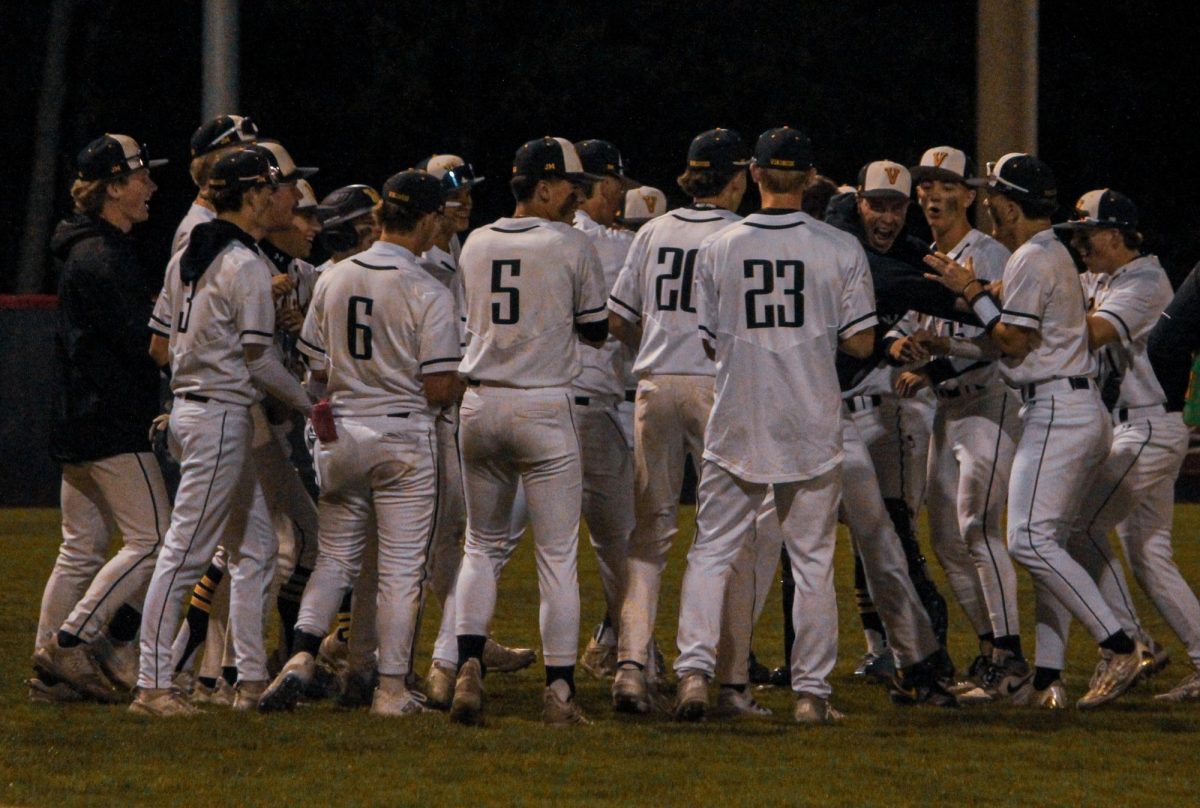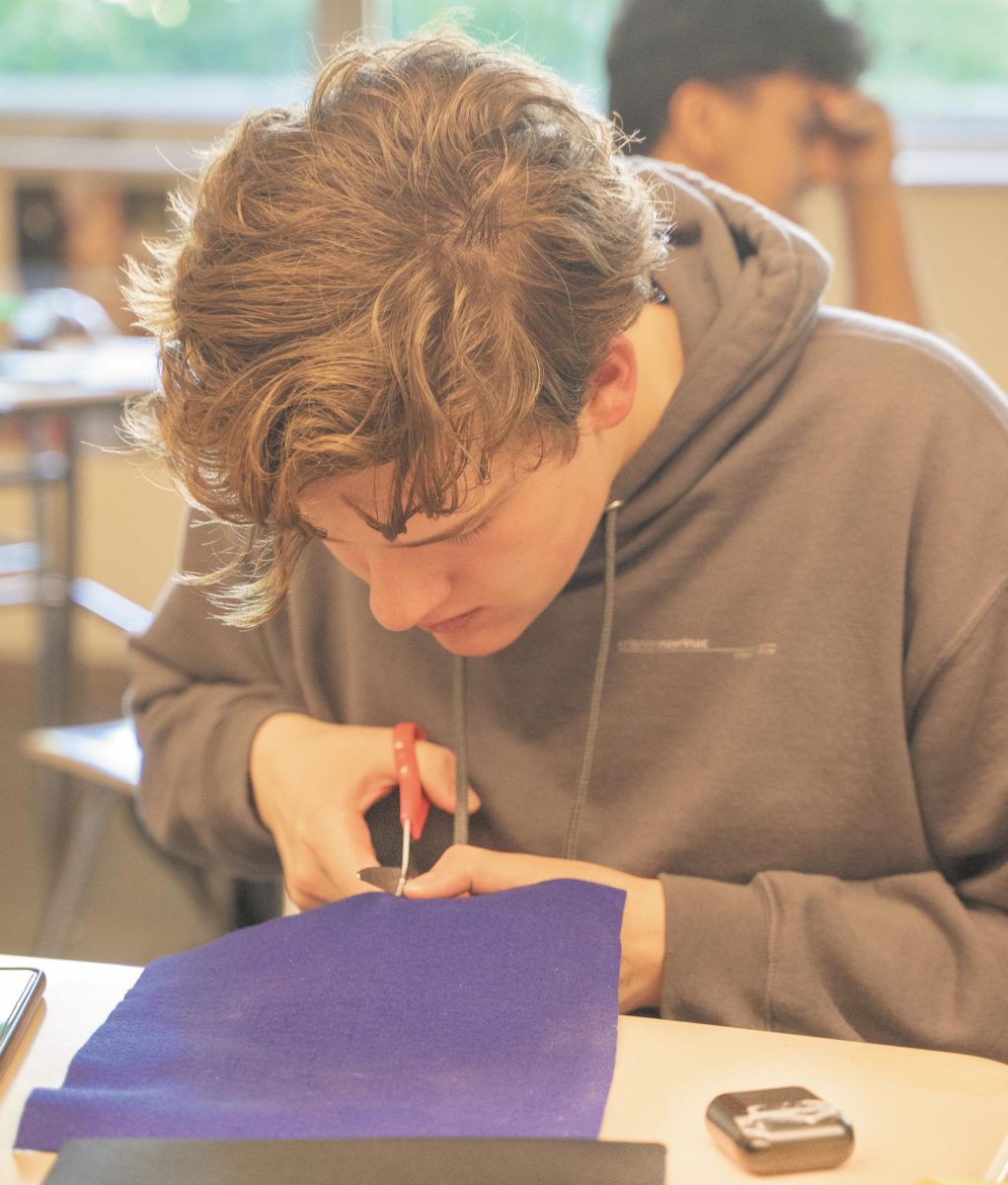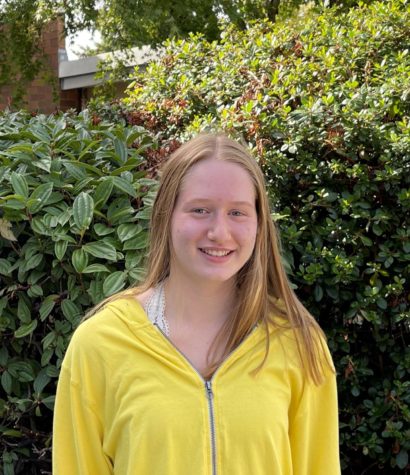Amazon Scout is a fully electric, autonomous delivery robot that was announced by Amazon in 2019. According to Amazon, they were first tested in Snohomish County, and according to an article written by Seattle Times reporter Paige Cornwell, they have since expanded testing in Washington to include Bothell, Everett, Lynnwood and Mukilteo, as well as locations in three other states. Amazon employees are currently testing the robots in the Bothell area near Eastside Church.
According to Cornwell’s article, these 100-pound, six-wheeled, battery-powered robots are about 2 feet, 6 inches long and 2 feet wide. According to an article written by Devin Partida on the ReHack website, the goal of these robots is to help reduce the time it takes products to arrive at people’s houses from distribution centers. Amazon’s goal is to be able to speed up two-day shipping to one-day shipping, according to Partida. Partida wrote that it will also help Amazon reach their goal of net-zero carbon emissions by 2040, and that delivery robots could help to reduce delivery costs by 80%-90%.
Due to a variety of factors, the robots have been in the testing phase for about three years. According to an interivew of Amazon Scout Vice President Sean Scott by the website ScienceDirect, this is in part due to the delays caused by city and state restrictions on autonomous robots. According to the website, unions also oppose the implementation of robots in general because of concerns regarding robots replacing human workers.
The Scout devices are stored in housing containers called hives, which are scattered around Washington. A temporary housing container is in the Eastside Church parking lot in Bothell. According to Cornwell, the plan is for the robots to be stored in these containers until they are needed for a delivery. When they are needed, a worker will then load the package into the device at one of the local dispensers. The Scout will then be sent on its way, traveling 3 to 4 mph.
After the package is received, the customer closes the lid, and the Scout returns to its designated housing container. According to an Amazon spokesperson, the customer will be able to pick a specific window of time for the Scout to deliver the package, which can be changed at any time. She also wrote that if the customer is not available when the Scout arrives, it will return to its home and the package will be hand-delivered by Amazon by the end of that day.
Washington State House Bill 1325 allows delivery robots to operate on sidewalks and to have the right of way over pedestrians. However, in Kirkland, there are some concerns about how they will interact with the rest of society. Kirkland city council member Toby Nixon expressed uncertainty regarding how the housing containers will fit into the community as well as how they will impact pedestrians.
“We’re also concerned about the containers (‘hives’) where the robots are stored overnight and recharged, such as their appearance, how they fit into a neighborhood, where they should be allowed to be placed, issues like fire safety, how much space they take up in a parking lot and their impact on the number of available spaces, etc.,” wrote Nixon in an email. He also expressed concerns regarding how the robots themselves will interact with the community and pedestrians. He said he wonders what will happen if both people and robots need to use the same area at the same time.
“My main concern is how they respond to pedestrians and sidewalk obstructions, particularly how they handle an encounter with someone using a wheelchair or motorized scooter or other mobility enhancement who isn’t able to step off the sidewalk onto grass or step off the curb to let the robot pass,” Nixon wrote. “Will the robot back up to the last driveway or other wider spots and let the person pass? Or do they just freeze in place and block the sidewalk?”
Because of this, Kirkland passed Ordinance O-4779, which currently prohibits new right-of-way use permits, which, according to the King County website, would allow the robots to have the right of way. The ban also extends to new applications for building permits, which would prevent Amazon from constructing housing units for the robots. Kirkland City officials said in a press release that this is not a permanent ban, but rather a temporary restriction that will allow for more testing and data to be collected, as well as time to get a feel for public opinion on these robots.
“The city staff is studying these issues now and will be bringing recommendations to the council,” wrote Nixon. “There will also be at least one meeting where members of the public can raise their concerns, and of course, comments can be submitted by email at any time.”
Nordic News reporters attempted to reach out to the Amazon testers themselves for more information. However, when the reporters went in person to ask them, they were told that a friend of the tester had been fired due to talking to someone about the robots, so they could not talk to the reporters about them. Additionally, the Bothell City Manager wrote in an email that the City of Bothell does not have experience with the Amazon Scout program as of yet even though Eastside Church, which does the local testing, is located in Bothell.
Despite Nixon’s many concerns and questions, he does think there could be some benefit to the community as the use of these robots becomes more prevalent. He sees the smaller form factor as a possible upside of this new technology.
“A positive impact could be a reduction of the number of large delivery trucks on narrow residential streets, and the accompanying noise and air pollution,” wrote Nixon.
This would support Amazon’s goal of net-zero carbon that Partida wrote about. Freshman Caedan Do also said he has positive opinions regarding the benefits that the robots could have amidst another global issue: the current COVID-19 pandemic.
“I think they’re really cool because they can deliver packages without people having to fully interact with others,” said Do.
These robots are becoming more common throughout the United States and are changing the way that people and delivery services interact. However, for the average person, sophomore Emily Mo does not think that it will make that much of a difference.
“I think most people, as long as nothing goes wrong, won’t even notice that it changed,” said Mo.



